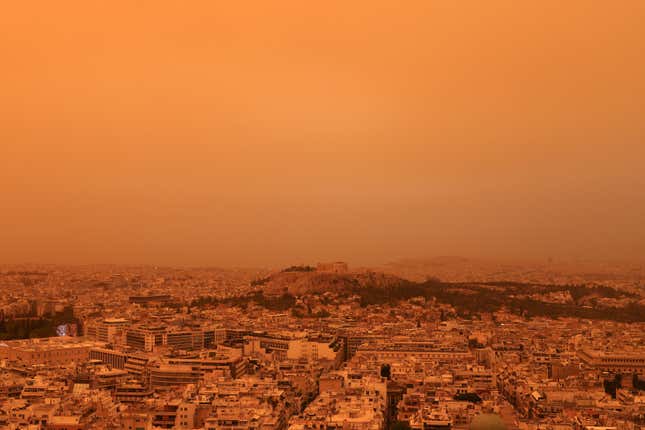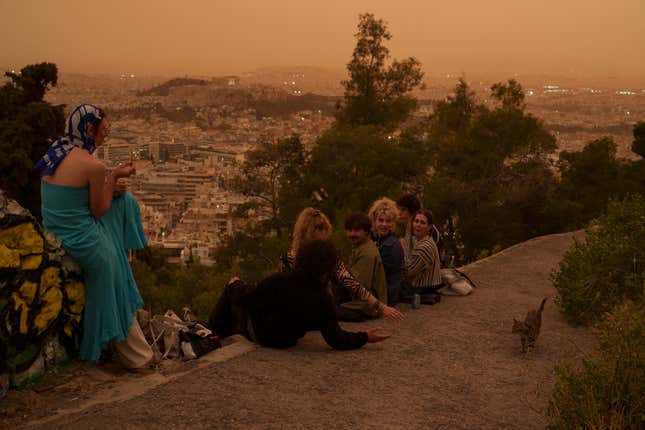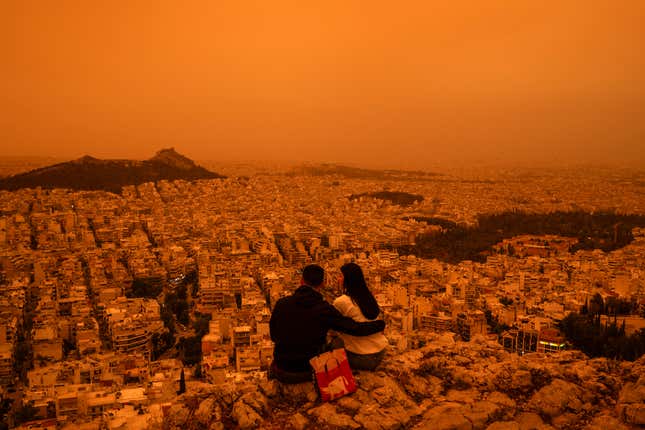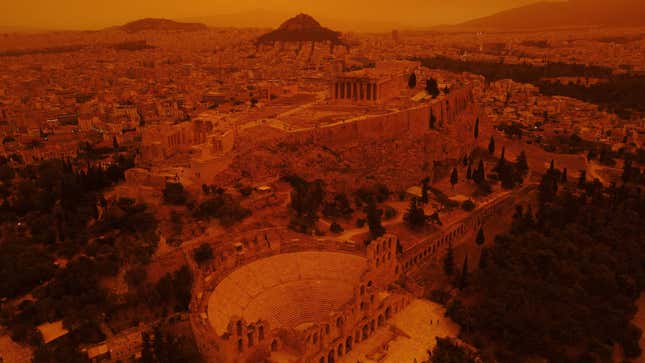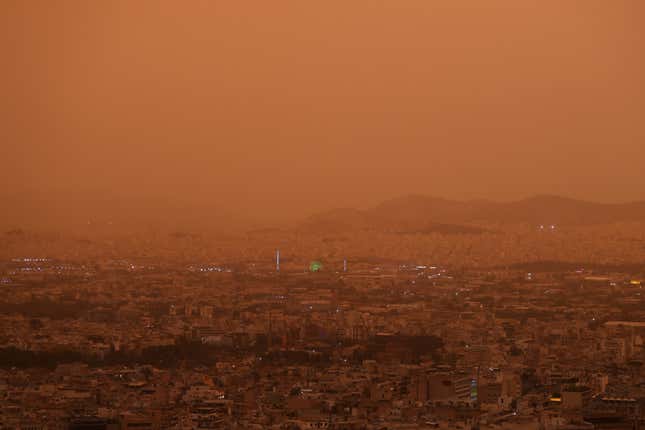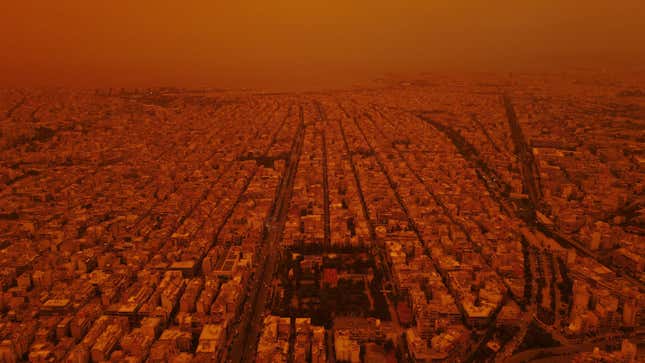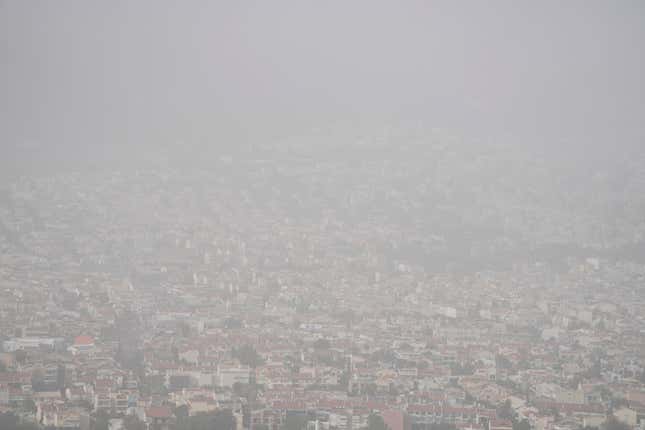
Residents in Greece were witnesses to a hellish-looking dust storm this week. The dust originated from the Sahara desert in North Africa and was blown across the Mediterranean Sea by strong winds. By Tuesday, Athens and other Greek cities were blanketed in an orange-red and potentially dangerous haze.
Though the dust storm had begun to vacate the region by Wednesday morning, its short presence made for some eerily beautiful imagery. Here are some of the best photos we’ve seen of the storm and some related trivia.
